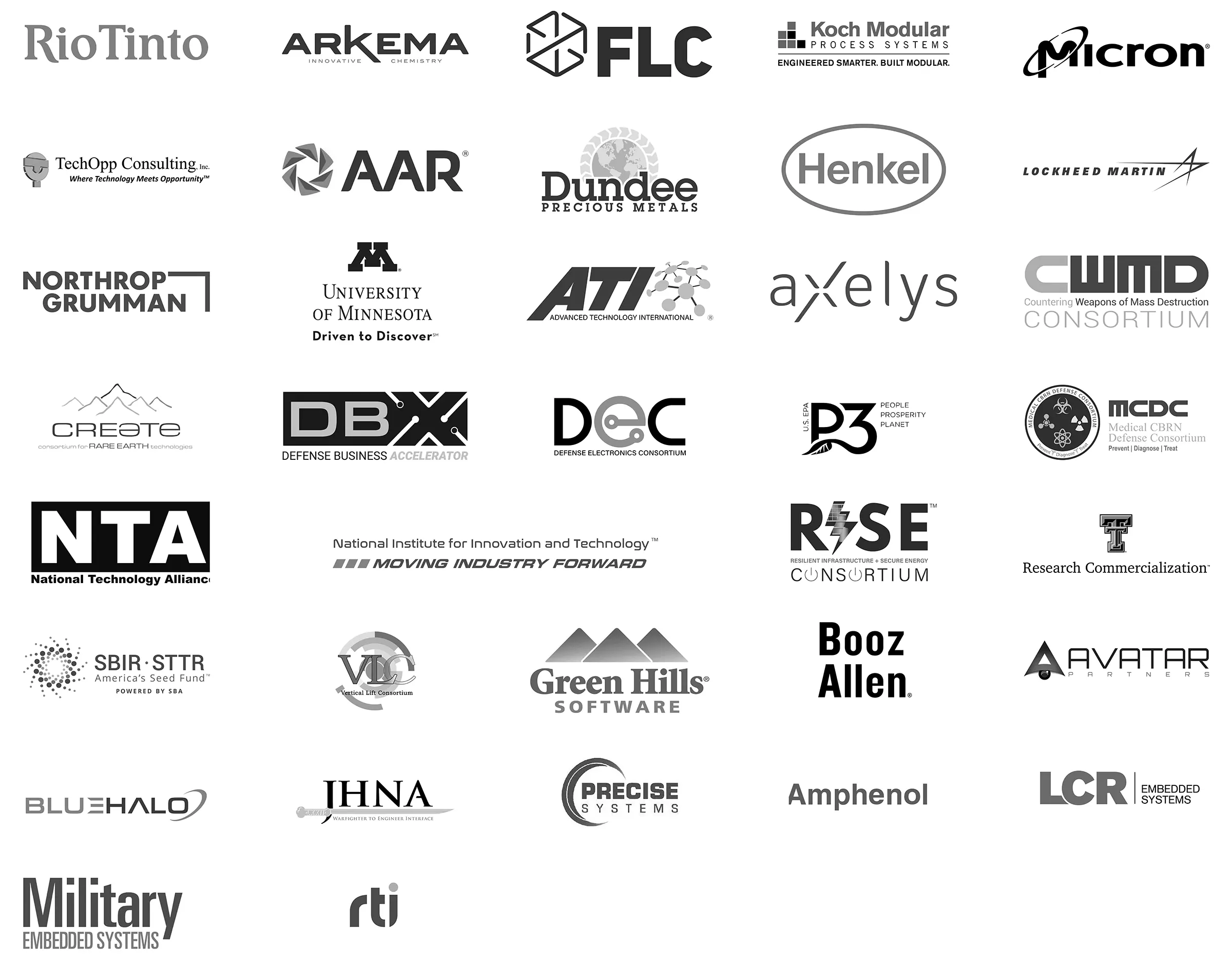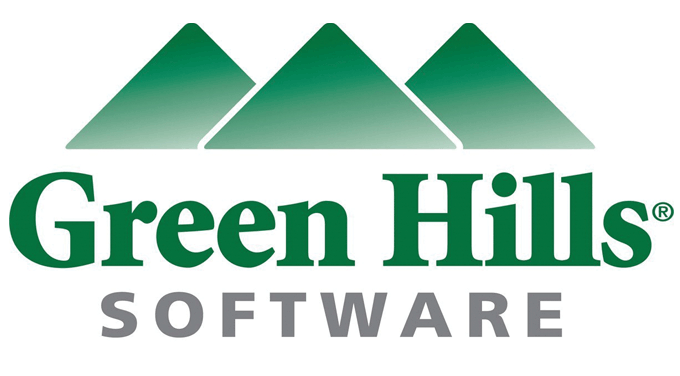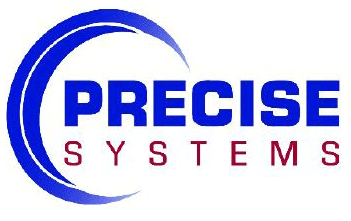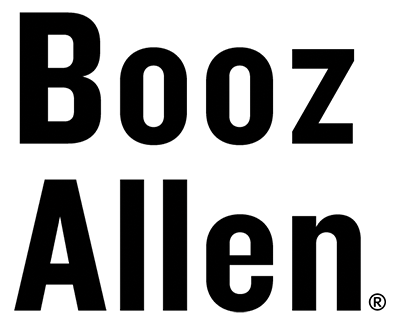MOSA SUMMIT AGENDA 2024
DAY-AT-A-GLANCE as of March 29, 2024
| MONDAY, JUNE 17, 2024 | |||||||
| Tri-Service Track US Army, Navy & Air Force |
CUI Briefings |
MOSA Business Strategy and Integration Track | MOSA Industry Application | ||||
| 0800-0900 | AMCE Software Operating Environments | USAF MOSA Strategies – Standards and Implementations | That's what friends are for – The business of integrating competitive MOSA solutions and government acquisition strategies.
|
Software Enabled Weapons | |||
| 0900-1000 | MOSA Conformance | How to Implement MOSA Success - Acquirer/Supplier Collaboration and Information Needs | Truths about AI and MOSA | ||||
| 1000-1030 |
|
||||||
| 1030-1200 | Keynotes
Dr David Honey, Deputy Under Secretary of Defense for Research and Engineering (OUSD(R&E) |
||||||
| 1200-1800 | MOSA Industry & Government Expo (Co-located TechConnect Inonvation Expo & SBIR Innovation Pavilion): Expo Opens | ||||||
| Tri-Service Track US Army, Navy & Air Force |
CUI Briefings |
MOSA Effectiveness and Readiness | MOSA Technical Aspects and Challenges | ||||
| 1300-1400 | You Had Me at Title 10 (MOSA) – Leading Open Standards (FACE®️, HOST, CMOSS, SOSA™️) Charge Forward | USAF MOSA Strategies – Standards and Implementations | PntOS and ASPN: A Case Study for MOSA Through the DoD Program Lifecycle | An Assessment of Digital Twin Readiness Across DoD | |||
| 1400-1500 | Data Integrity: The Linchpin of Future Warfare | ||||||
| 1500-1600 | MOSA Implementation in the USAF |
How can MOSA better support certification of safety- and security-critical systems?
|
Modular Open System Approaches (MOSA): Navigating Current Practices and Future Trends
|
||||
| 1600-1800 |
|
||||||
| TUESDAY, JUNE 18, 2024 | |||||||
| Tri-Service Track US Army, Navy & Air Force |
MOSA Business Strategy and Integration | MOSA Effectiveness and Readiness Track | |||||
| 0800-0900 | Digital Backbone | Tri-Service Meeting Space | Planning for MOSA success: What decision information and metrics are needed to support MOSA success for both acquirers and suppliers? | Open Architecture and its application to enhance operational capability
|
|||
| 0900-1000 | Launched Effects and Advanced Teaming Need System of System MOSA
|
Discussion of the Application of Model-Based Systems Engineering (MBSE) to Modular Open System Approaches (MOSA) | |||||
| 1000-1030 | Coffee and Networking Break | ||||||
| 1030-1200 | Keynotes
BG David Phillips, Program Executive, PEO Aviation, US Army |
||||||
| 1200-1800 | MOSA Industry & Government Expo (Co-located TechConnect Inonvation Expo & SBIR Innovation Pavilion): Expo Opens | ||||||
| Tri-Service Track US Army, Navy & Air Force |
MOSA Industry Application | MOSA Effectiveness and Readiness | MOSA Business Strategy and Integration | ||||
| 1300-1400 | Realizing MOSA in Government Acquisition | Intellectual Property & Data Rights Discussion OUSD New Guidelines for IP Data Rights |
MOSA in the Hands of the Warfighter
|
MOSA Meets Acquisition Execution | |||
| 1400-1500 | Breaking Vendor Lock, The Mission OFP | MOSA Challenge | |||||
| MOSA Innovation Challenge Pitches | |||||||
| 1500-1600 | Digital Engineering Lesson Learned |
MOSA Domain Overlay (standardized reference model) | Vertical Lift OEM Perspectives on MOSA | MOSA Innovation Challenge Pitches and Award Ceremony | |||
| 1600-1800 |
|
||||||
MONDAY JUNE 17, 2024
Approach, benefits, and challenges of specifying a software operating environment (SOE) product line within the AMCE, with mission and safety critical variants to support the aviation enterprise.
CUI confirmation is required for attendance: - US Military Uniform - DoD CAC - Access to AFRL VDL - Contact Devin Wisdom, devin.wisdom@us.af.mil, 850-420-4283
That's what friends are for – The business of integrating competitive MOSA solutions and government acquisition strategies. (BlueHalo)
MOSA allows the government to choose the best athlete for any specific capability. However, when all these capabilities are thrown into a single chassis, proprietary information needs to be shared with the Integrator. Often enough the Integrator is a competitor of the capability or has a complementary competitive division. This stifles the information flow and impacts teaming agreements at the expense of the customer. The problem is occurring more and more and dilutes the MOSA solution fundamentals. To compound this, being the integrator gives a contractual advantage which adds more competition to the proposed solution(s). This panel will work through these concerns and discuss potential business models that would allow competitors to work together, within a chassis, while protecting their own proprietary data, performance and roadmap, giving the customer and warfighter the best technology available. Putting the best of breed technology capabilities together is not a technology problem. It is a business problem fraught with pitfalls and perils.
The panel will explore different technologies to enhance the modularity and adaptability of Software Enabled Weapons (SEW) through an "App Store" concept. SEW will draw from industry best practices in areas like Modular Open System Approaches (MOSA), including Government Reference Architectures (GRAs), Cyber-Physical sub-system implementation designs, standardized interfaces, Component-based architectures, auto-code generation, and specialized modeling languages. Panelists will discuss how these components have been used in their organizations and showcase how they can be seamlessly integrated to create a prototype Weapons Application Store.
Describing the MOSA Conformance concept
How to Implement MOSA Success - Acquirer/Supplier Collaboration and Information Needs
To achieve the desired MOSA benefits, acquirers and suppliers must collaboratively apply mature systems engineering processes and MOSA principles to the alternative solutions that satisfy both the Mission and MOSA business requirements. This panel is a follow-on to the first MOSA summit MOSA in Acquisition: Policy to Practice Part 1 track and the Program MOSA Transformation Information Needs and Metrics presentation which defined a seven-step process for what was needed for MOSA success. Since the last conference there has been considerable progress at NDIA, OMG, and the DoD IP Cadre to address how the seven-step process is executed. The panel facilitates an interactive discussion of the seven-step process highlighting MOSA implementation considerations, information needs, metrics and collaboration needed for MOSA and mission success. Discussion of MOSA use cases provide the opportunity to explore how different MOSA approaches, at the practitioner level, can be applied to new and different situations. The concept of MOSA product value to support the business case and MOSA metrics recommendations will be discussed.
TBD
Chair: John Stough, VLC Board MOSA Sub Group and recent PEO AVN MOSA TO, Exocubic
CUI confirmation is required for attendance: - US Military Uniform - DoD CAC - Access to AFRL VDL - Contact Devin Wisdom, devin.wisdom@us.af.mil, 850-420-4283
You Had Me at Title 10 (MOSA) – Leading Open Standards (FACE®️, HOST, CMOSS, SOSA™️) Charge Forward
Title 10 - U.S. Code § 4401: A major defense acquisition program shall be designed and developed, to the maximum extent practicable, with a modular open system approach (MOSA) to enable incremental development and enhance competition, innovation, and interoperability. || Key MOSA/Open Architecture/Open Standards experts from NAVAIR PMA-209, Army DEVCOM C5ISR Center, PEO Aviation, and the Air Force ACC talk acceleration of open standards adoption, active advancements (i.e. fielded yet?) with the Hardware Open Systems Technologies (HOST) Standards Framework, Future Airborne Capability Environment® (FACE), Sensor Open Systems Architecture™ (SOSA), and the C4ISR/Electronic Warfare Modular Open Suite of Standards (CMOSS; think ‘Victory’) for Air, Sea, and Ground.
MOSA has been touted as a powerful concept to enable rapid program modification and upgrades throughout the DoD lifecycle. The key to taking full advantage of MOSA is the idea that everyone, from those involved in concept studies, through program development, and into sustainment can utilize/leverage the MOSAs to make rapid technical improvements and advancements with little wasted effort. However, the ideal is yet to be fully proven. This panel will showcase one case study in making that a reality with MOSA for Position, Navigation, and Timing (PNT), leveraging experiences from multiple development projects and programs of record. These programs are utilizing multiple open-source MOSA products, two of which are government-owned, developed by IS4S for the government: ASPN and pntOS. ASPN is a PNT messaging standard, upon which WOSA is also based. pntOS is a pluggable, modular framework for sensor fusion and beyond, in use by IS4S, TRX, and several other companies. The esteemed panelists will provide experiences and observations from their unique perspectives, debating what is working, what deficiencies have been observed in the implementation, and what must be done to enable MOSA to achieve the ideal scenario.
This panel will bring government and industry experts together to discuss the current state of the art with respect to digital twins across the Department of Defense. Topics include taxonomy, interfacing, data engineering, and architectures.
Explain that battles will be won or lost based on sensor to shooter timelines measured in seconds to minutes with no time to second guess the data. AI-driven decisions require training data which is trusted and operations depend on an immutable chain of data custody. This panel will consider military needs, gaps, current and emerging technology, and steps which need to taken to accelerate the deployment of solutions.
This panel will focus on addressing key inquiries regarding the United States Air Force's (USAF) implementation of Modular Open Systems Approach (MOSA). It aims to identify the challenges associated with MOSA adoption, ascertain the USAF's tangible commitment to MOSA, highlight exemplary MOSA implementations within the USAF and the Department of Defense (DoD), explore prospects for enhanced collaboration among service branches in MOSA integration, and examine the role of Model-Based Systems Engineering (MBSE) in amplifying MOSA effectiveness.
How can MOSA better support certification of safety- and security-critical systems? (Green Hills)
MOSA and certification for airworthiness or cybersecurity have mostly been addressed independently. One challenge for certification of modular systems is that certification is performed at the system level for both airworthiness and security requirements, such the NSA/CYBERCOM Raise the Bar (RTB) Strategy baseline. Even when the system is composed of modules with open standard interfaces, changing any of those modules requires recertification, which can involve retesting and revalidation of the entire system. Applying Integrated Modular Avionics (IMA) principles, such as robust partitioning, can help reduce the amount of retesting and reverification. Another technical practice that can help is Model-Based System Engineering (MBSE). As the use and understanding of MBSE evolves, how can it be leveraged to streamline the certification process for both safety and security?
Modular Open System Approaches (MOSA): Navigating Current Practices and Future Trends
Please join us for a panel discussion exploring the dynamics and intricacies of Modular Open System Approaches (MOSA). This event features a diverse array of experts from across the supply chain, including notable figures from industry, government, and academia. Together, they will discuss the application, evolution, and impact of MOSA from their perspectives.
TUESDAY JUNE 18, 2024
Emphasize importance of Digital Backbone as part of the Government MOSA and encourage discussion on concept, technology, and experience with
Planning for MOSA Success: Using Model-based Acquisition to communicate and measure MOSA Success
MOSA is an integrated business and technical strategy to achieve competitive and affordable acquisition and sustainment over the system life cycle. To achieve this, a balanced policy is required that will empower acquirers to own and manage their systems independently, free from the constraints of acquisition decisions while also incentivizing the Defense industrial base to innovate without fear of losing control of discriminating IP. This panel will address the need for early and transparent communications between acquires and suppliers to identify the decision information and metrics required to support MOSA success and expected compliance evidence for evaluation from the following perspectives: • Acquirer during the Request for Proposal (RFP) generation - content and evaluation factors (i.e., UCF section L and M); strategies for effective communications. (i.e. reference architectures, Domain overlays, etc.) • Contractor during proposal response; Exploration of challenges faced by contractors. • Acquirer during proposal evaluation; Role of transparency in the evaluation process.
Open Architecture and its application to enhance operational capability (Precise Systems)
This panel is a discussion on how the application of Open System Architecture (OSA) standards, and the resulting products, can deliver enhanced operational capability. There has previously been a lot of communication and understanding of how OSA can increase supplier competition and reduce cost/schedule. By having a holistic view of operational requirements, and translating that into engineering requirements, a MOSA-enabling enterprise can use OSA to deliver an increased competitive edge and therefore reduce operational risk. This panel will discuss some examples, and how the Defense community can deliver this valuable advantage to our Warfighters.
The traditional implementation of uncrewed aircraft system (UAS) and uncrewed ground vehicles (UGV) command and control (C2) are largely based on monolithic software architectures and Interoperability Overarching Profiles (IOPs) (RAS-A, RAS-G, STANAG4586). To answer the need for a systems of systems integration across all groups of UAS, UGV, and launched effects, large OEMs and emerging tech companies are attempting to solve the problem by proliferating proprietary software solutions and improving proprietary messaging standards that lock the government to a single vendor. This panel will talk through the MOSA which applies the PEO Aviation Enterprise Architecture (EA) FACE Technical Standard, Aviation Mission Computing Environment, Weapon Machine Interface (WMI), Scalable Control Interface (SCI) User Interface (UI), IOPs, and widely adopted open standards to create an architecture that solves the Human Machine Integrated Formation (HMIF), Uncrewed Vehicle Control (UVC) Component Specification Model (CSM), and Replicator.
Discussion of the Application of Model-Based Systems Engineering (MBSE) to Modular Open System Approaches (MOSA)
The panel will focus on the application of Model-Based Systems Engineering (MBSE) to Modular Open System Approaches (MOSA). Of particular interest will be the relationship between a component specification model, a component design model, and a data model / data architecture and how those models can be applied in the context of acquisition of open systems. The panel will also be prepared to discuss refinement of component requirements and component architectures so they align to the Enterprise objectives for reusable, portable, modular, and certifiable systems, such that they can be composed into systems that meet the stakeholder's needs. All of these processes are aided by the use to models to capture, analyze, and document systems using multiple model languages such as System Modeling Language (SysML) and Open Universal Domain Description Language (Open UDDL), which is the model language adopted by the Future Airborne Capability Environment for its data model requirements.
Chair: Marcell Padilla, Technical Advisor, DEVCOM AvMC
This panel of experts will share experiences of those in the trenches of acquisition; lessons learned, useful approaches, and enablers as best practices. They will highlight innovative ideas, workarounds, enablers, and modified approaches created by government MOSA practitioners to help identify best practices, to help lead for a wider set of programs. Attendees will learn how to address some difficulties which include interpreting and addressing the impacts of complex and seemingly conflicting MOSA requirements, integrating systems using multiple standards or architecture frameworks, and work with providers in new ways.
A discussion amongst industry and DoD MOSA practitioners focused on the fielded solutions that embody MOSA principles and benefits. Point of the discussion is to show that it can be done and to share practical lessons learned.
The goals of MOSA are only realized when they are serving users, in this case warfighters, in production. These experts are actively serving over one million users, increasing adaptability, rate of delivery, and affordability through structured processes that scale are rates that are measurably world class.
In this panel, experts will discuss the fundamental aspects of intellectual property (IP) and data rights within the context of MOSA. The panel aims to provide attendees with a comprehensive understanding of how IP and data rights impact modular open systems approaches across various industries
The panel will present and discuss findings related to the Army's Architecture Collaboration Working (ACWG) Digital Engineering Subgroup (DESG)'s sprints from January to May 2024. These sprints focused on discussions with experts from Industry and Government focused on the question "How do you ask for and receive digital artifacts?". The panel will discuss the themes, key findings, and experiences related to digital artifact acquisition.
Many platforms today are beholden to the OEM as the sole integrator despite them being slower, less innovative, and more expensive. For legacy and current systems this is largely due to proprietary architectures tied to the flight Operational Flight Profile (OFP). Emerging government reference architectures remove the need to deal with this on current or future systems, crewed or uncrewed. The separation of air vehicle and mission systems creates the opportunity to separate out a mission OFP that can enable independent and rapid capability insertion outside of prime contractors. There are examples on the Gray Eagle (MQ-1C) for the 160th, CH-47F, launched effects and FLRAA for future systems, and emerging government reference architectures across the Air Force and Army that are addressing this historic problem head on. This panel will discuss how the problem is solved with architecture starting with PEO AVN’s Enterprise Architecture and FVL Architecture Framework (FAF), OAMO’s Government Avionics Reference Architecture (GARA), having the correct hardware and software infrastructure (AMCE CSM), open standards such as Open Mission System (OMS), FACE Technical Standard, and IOPs across Army and Air Force systems and how those capabilities can be acquired differently. We can make MOSA successful, but it requires changing our architectures and acquisition strategies.
Panelists will address audience questions, allowing participants to delve deeper into specific aspects of IP Data Rights as it pertains to MOSA and OUSD Guidelines.
This session, organized by the Vertical Flight Society, brings together experts on MOSA from the three major US military helicopter original equipment manufacturers (OEMs) to provide insights into developing the next generation of rotorcraft, including the progress and challenges in fully implementing the Army's ultimate vision of MOSA. This session was standing room only last year and will again be extremely valuable for US Army attendees interested in or responsible for MOSA implementation.
Developing a system architecture that embodies Modular Open Systems Approach (MOSA) principles is not an easy task. There are numerous technical considerations, each with potentially significant business impacts. Selection of appropriate MOSA metrics to assess MOSA adherence to core tenets and compliance with U.S.C Title 10 §4401 is highly contextual and requires defensible justification. This presentation will provide a view into the development of a MOSA Domain Overlay in collaboration with the Object Management Group (OMG) Model-Based Acquisition User Community as part of an effort to supplement or transform Department of Defense (DoD) agencies from document-based acquisitions to model-based acquisitions.

TECHCONNECT SPONSORS & PARTNERS

TECHCONNECT SBIR/STTR AGENCY PARTNERS

Produced by:  |








